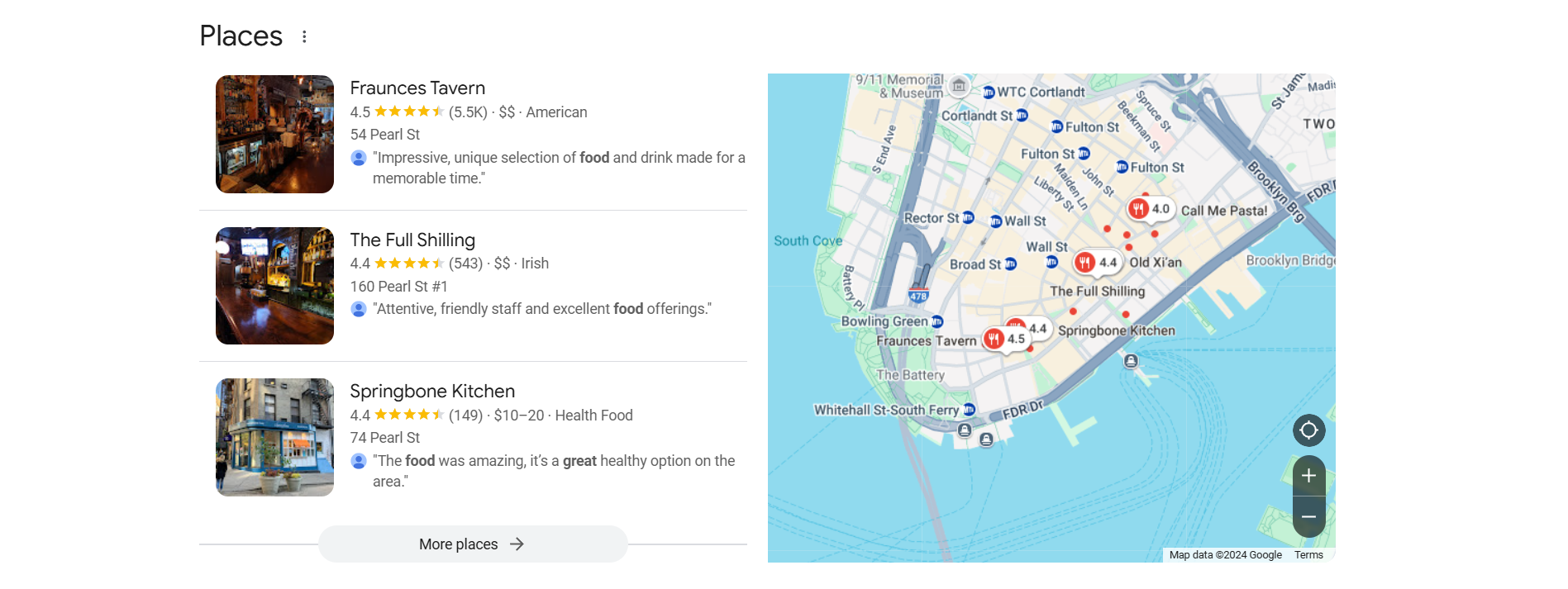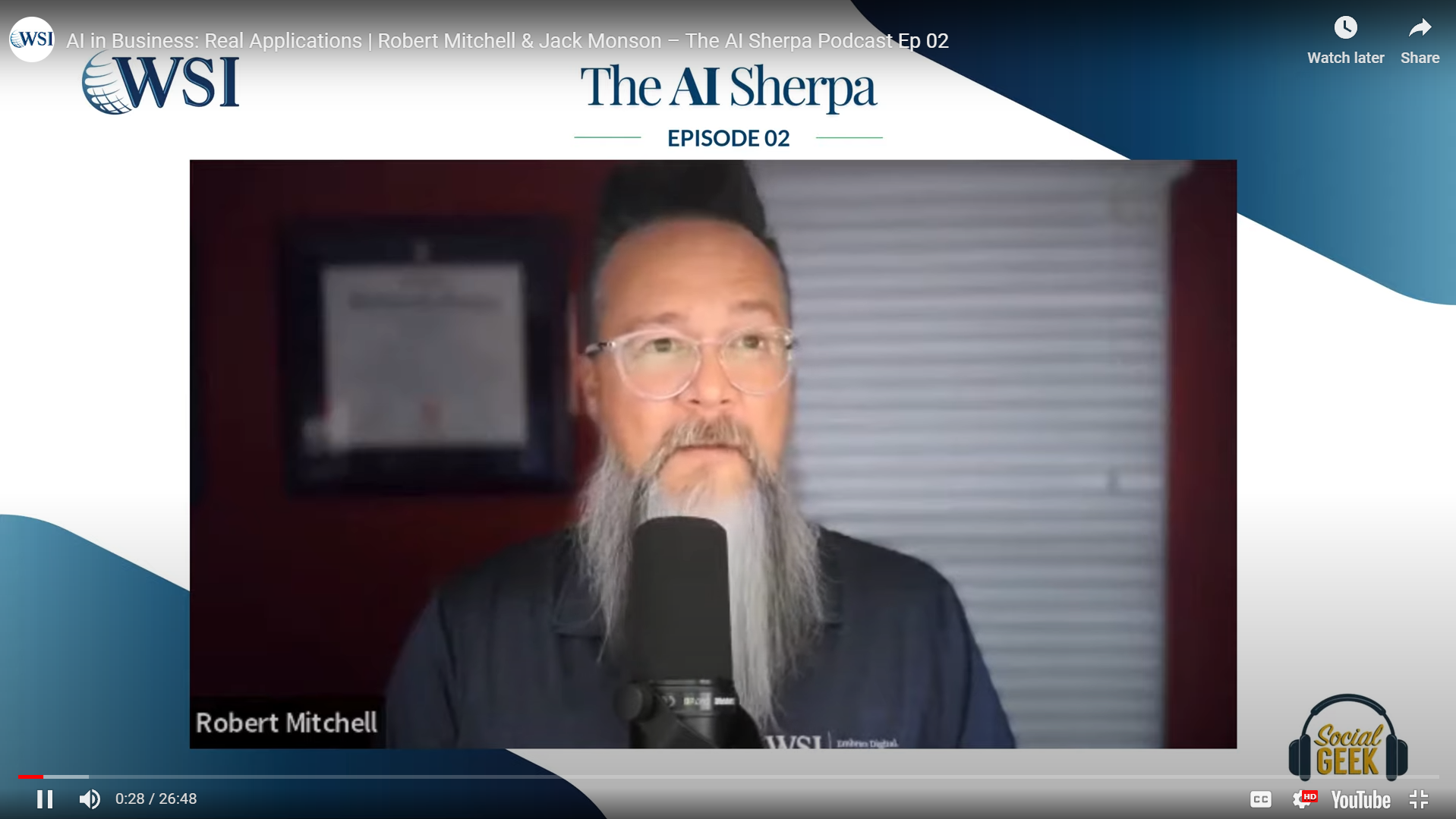- HOME
- ABOUT US
- SERVICES
- CUSTOMER STORIES
- OUR EXPERTS
- CONTACT US
- EXPERT TIPS
In need of some sound digital marketing advice?
Book a free consultation with one of our experts.

Making a difference in our clients’ lives
We positively impact the lives of our clients beyond their KPI reports.

Blog Layout
2023 is proving to be an interesting year regarding AI-generated content. You might be asking yourself if AI Content Detectors Really Work. Let's take a look and see how the experts are weighing in on AI-generated content detection.
Artificial Intelligence (AI) has become increasingly prevalent in various industries, including content creation. With the rise of fake news and misinformation, many companies have developed AI content detectors to identify and flag misleading or harmful content before it can spread. But the question remains, do these AI detectors really work? In this blog post, we will explore the effectiveness of AI content detection and its implications for the future of online content management.
Introduction: What are AI content detectors?
AI content detectors use machine-learning algorithms and natural language processing to distinguish between human-written and machine-generated content. Its core relies on reverse engineering language patterns to determine predictive text. Despite its potential effectiveness, limitations should be considered as these tools are not 100% accurate in detecting AI-written content. However, AI detectors are crucial in combatting fake and plagiarized content, and it is essential to weigh the trade-off between AI and human-written content. Writer.com and Content at Scale AI Content Detection are among those that claim to detect AI-written content, but the ChatGPT generator has been proven to be challenging to detect. Another tool, TurnItIn's AI writing detector, claims to have a 97% accuracy rate. Nevertheless, no AI tool or person can completely control the detection of AI-produced text, and the best way to ensure originality is through human editing and quality assurance practices.
The limitations of AI detection: Why it's not perfect
Despite advancements in artificial intelligence (AI) technology, AI content detectors are still not perfect. As mentioned earlier, these detectors rely on factors such as perplexity and burstiness to determine whether a text was written by a human or AI. However, the accuracy and reliability of these detectors are limited by several factors. For one, different detectors operate with varying degrees of accuracy, which can affect the results of AI detection. Additionally, the sophistication of AI-generated content can pose a challenge for these detectors, as they may not be able to identify more advanced forms of AI-generated text. Even OpenAI, a leading AI research organization, estimates that its content detector misses 74% of AI-generated text. Despite its limitations, AI content detection technology is becoming an increasingly important tool in combatting fake and plagiarized content. Nonetheless, it is vital to recognize that no tool for detecting AI-written content is completely infallible.
AI content detection accuracy: What the numbers say
AI content detection accuracy is a crucial factor in determining the reliability of these tools. As mentioned earlier, no AI content detector tool is perfect, and their accuracy rate varies from tool to tool. However, the numbers suggest that some tools are more accurate than others, with some even claiming a perfect score. Despite this, there will always be limitations in AI detection as it is impossible to detect all AI-written content. Therefore, it is important to consider the trade-off between AI and human-written content and choose the most suitable tool for individual needs. Writer.com's AI detector boasts a 99.12% accuracy rate, indicating its reliable performance. In contrast, TurnItIn's AI writing detector claims a 97% accuracy rate. ChatGPT's detection as AI content demonstrates that even advanced AI models may not always pass as human-written. While AI content detectors are not perfect, their importance in combatting fake and plagiarized content is crucial.
AI detectors vs human-written content: The trade-off
In the world of content creation, the rise of AI content detectors has brought both advantages and limitations. While these tools can help catch fake or plagiarized content, there is a trade-off when comparing them to human-written content. AI detection is based on predicting patterns, making it less accurate than human judgement, and it can also be misled by machine-generated documents wrongly attributed as human-written. Despite this, AI detection tools like Writer.com and Content at Scale AI Content Detection have shown impressive accuracy rates, while others like ChatGPT still struggle to pass off as human-written content. The reality is that no tool is perfect, and it is important to understand the limitations of AI detection and the value it can bring in combatting fake and plagiarized content.
Writer.com: A decent AI detector?
According to research in the previous sections, AI content detectors have their limitations and are not always accurate. However, Writer.com's AI Content Detector shows promise as a decent tool for detecting AI-written content. The platform offers a free and straightforward detection tool that can be used for various purposes. While the parameters for detecting AI content are unclear, Writer.com's AI Detector has been able to detect content that other AI detectors have missed. Nevertheless, no AI tool is 100% accurate, and writers must take care to ensure their content is genuine to avoid being flagged by detection tools.
Content at Scale AI Content Detection: A perfect score?
The Content at Scale AI Content Detection tool has been touted as having a perfect score in detecting AI-written content. While this may sound impressive, it's important to recognize that no AI detector is 100% accurate. However, Content at Scale did tie for the highest accuracy in a test of all detectors. Their proprietary content generator taps into multiple layers of three AI components, which may contribute to their success. It's worth noting that AI detection is based on predicting patterns, and as large-language models continue to evolve, detection accuracy is likely to improve. Ultimately, the use of AI detectors is crucial in combatting fake and plagiarized content.
ChatGPT: Why it can be detected as AI-written content
ChatGPT has become a popular tool for generating written content, but it can be easily detected as AI-written content. This is because ChatGPT uses large-language models to predict patterns and generate text, making it easier for AI detectors to identify it as a product of AI technology. While ChatGPT can create engaging and informative content, its detection as AI-written can lead to issues of plagiarism and dishonesty in academic and professional settings. It is important to consider the limitations of AI detectors and their potential impact on the quality and authenticity of written content. Despite its drawbacks, the development and improvement of AI content detectors is crucial in combatting fake and plagiarized content, and ensuring the integrity of written work. As technology continues to evolve, it is important to find a balance between the use of AI technology and maintaining ethical and professional standards in the written content industry.
TurnItIn's AI writing detector: 97% accuracy claim
TurnItIn's AI writing detector claims a 97% accuracy rate in identifying content created by AI, including ChatGPT and GPT-3 generated writing. This tool has been developed to combat plagiarism and provides educators with a reliable means of identifying and addressing academic dishonesty. However, while the accuracy rate may seem high, it is important to understand that no AI detection tool is perfect, and there are limitations to its effectiveness. Despite this, TurnItIn's AI detection technology remains a crucial tool in the fight against fake and plagiarized content, and its ability to accurately identify AI-generated content is a testament to its effectiveness.
The truth about AI text detection accuracy: No tool is perfect
The truth about AI text detection accuracy is that no tool can be relied on to be perfect. While there are several AI content detectors available, they all have their limitations, and it is essential to consider the trade-off between false positives and false negatives. As language models continue to evolve, it becomes more challenging to distinguish between human-written and AI-generated text accurately. Even the most popular AI detectors, such as Writer.com, can sometimes produce inaccurate results. TurnItIn's AI writing detector may claim to have 97% accuracy, but this still leaves a significant margin of error. The importance of these tools in combatting fake and plagiarized content cannot be overstated, but it is crucial to approach their results with a critical eye and not rely on them blindly. Ultimately, it is up to humans to verify and authenticate content, and AI tools should be seen as supplementary aids rather than infallible solutions.
The importance of AI detectors in combatting fake and plagiarized content
The limitations of AI detection do not negate the importance of AI content detectors in combatting fake and plagiarized content. As AI-driven plagiarism becomes increasingly prevalent, it is essential to have mechanisms in place to identify and prevent such content from circulating. While AI detectors may not be perfect, they are helpful tools in identifying patterns and predicting the likelihood of AI-generated text. Furthermore, with the increasing sophistication of language models and the growing prevalence of AI-generated content, businesses and individuals must stay vigilant in detecting and preventing plagiarism to save time and money, maintain trust and credibility, and uphold ethical standards in content creation. Ultimately, a combination of AI detectors and human oversight can provide the most effective means of combating fake and plagiarized content in the digital age.
In Summary
You may or not be surprised to learn that everything you just read after the Title and Introduction above is AI-Generated Content. So how did you do? Did you, a human, recognize this as AI-generated Content? Did you find this article informative? Certainly if you read all the way down to the summary, it was, by definition, engaging content. Would you also believe me if I told you that the graphic of the robot reading the paper was generated by AI for this article? Fact check: True!
Stay tuned for my next article, which will be written by me, where I dig into some actual examples of AI-detectors and we'll see how they do with real examples of human content and AI-generated content.
The Best Digital Marketing Insight and Advice
The WSI Digital Marketing Blog is your go-to-place to get tips, tricks and best practices on all things digital marketing related. Check out our latest posts.
Subscribe Blog
Thank you for contacting us.
We will get back to you as soon as possible.
We will get back to you as soon as possible.
Oops, there was an error sending your message.
Please try again later.
Please try again later.
*You may unsubscribe from digital communications at anytime using the link provided in WSI emails.
For information on our privacy practices and commitment to protecting your privacy, check out our Privacy Policy and Cookie Policy.
For information on our privacy practices and commitment to protecting your privacy, check out our Privacy Policy and Cookie Policy.
Don't stop the learning now!
Here are some other blog posts you may be interested in.
WSI COLORADO SPRINGS
Mailing Address:
13395 Voyager Pkwy, Ste 130-113
Colorado Springs, CO
80921
Phone:
719-445-9962
Email:
[email protected]
SOCIAL
ABOUT US
CONTACT US
SERVICES
CUSTOMER STORIES
OUR EXPERTS
BLOG
© 2024 Peak Digital Strategy - WSI Colorado. All rights reserved. WSI IC and WSI IM are registered trademarks of RAM. Privacy Policy | AI Policy | Cookie Policy
Each WSI Franchise is an independently owned and operated business.




